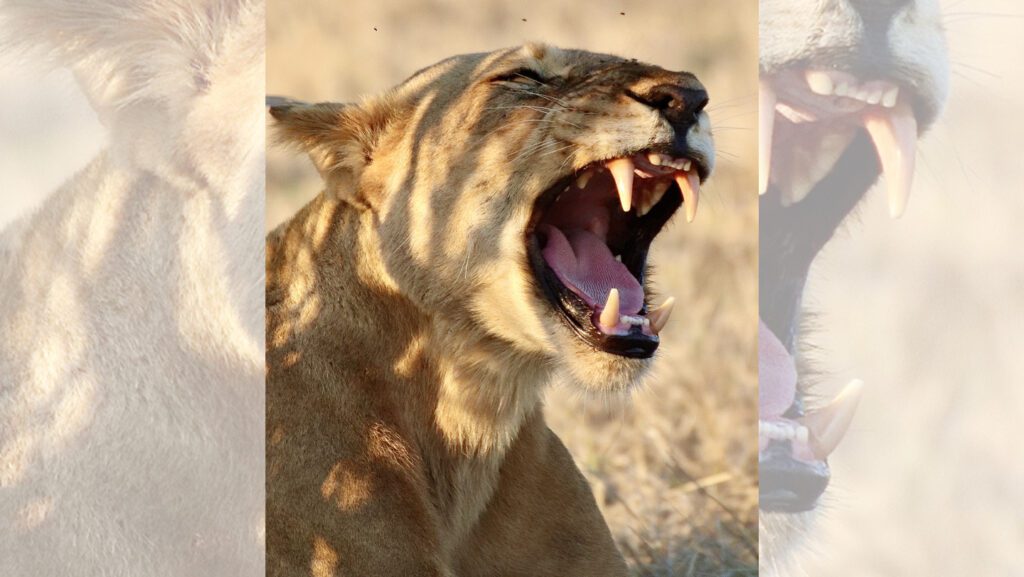The thunderous roar of the MGM lion that has opened Hollywood films for nearly a century has conditioned us to hear the big cat’s call as a blunt declaration: a booming blast announcing power and presence.
But the real soundscape of a lion pride is far more intricate than that cinematic caricature, researchers report November 20 in the journal Ecology and Evolution.
Using field recordings from Africa and machine learning techniques to analyze the acoustics, scientists found that African lions (Panthera leo) produce two distinct types of roars: the familiar, guttural one that anchors a roaring bout — and carries vocal signatures unique to each animal — plus an overlooked “intermediary” roar that is shorter and lower-pitched than the classic full-throated version.
The findings challenge decades-old assumptions. Biologists have long known that a lion’s roar helps advertise territory, attract mates and locate pride members — and that a complete roaring bout begins with moans and ends with grunts. But everything in the middle was treated as a single, undifferentiated roar.
Now, by decoding that roar into its component parts, and with artificial intelligence trained to tell one lion’s voice from the next, conservation groups may be able to count and track lions by sound alone.
“If you can identify a lion by its roar, this could potentially be a tool to count the number of individuals within a landscape,” says Jonathan Growcott, a conservation technologist and large carnivore biologist at the University of Exeter in England. Such insights could prove especially valuable at a time of shrinking habitat and poaching pressures, when lions have vanished from more than 90 percent of their historic range, he adds.
Still, what the newly identified intermediary roar actually communicates remains unclear. “We don’t know yet,” Growcott says. “Unfortunately, we don’t speak lion. There is no option of ‘lion’ on Duolingo.”
The discovery emerged from tens of thousands of hours of audio captured by remote recorders in Tanzania’s Nyerere National Park and by acoustic collars fitted to lions in Zimbabwe. When Growcott’s team ran more than 3,000 calls through pattern-recognition algorithms, subtle differences jumped out. Full-throated roars traced a clear arc, rising in pitch before ending in a trailing fall, while intermediary roars were flatter and far less elaborate.
Focusing on how long an utterance lasted and how high in pitch it climbed, the researchers could then build an algorithm capable of classifying each type of roar, moan and grunt with high precision. In at least one lion population, accuracy topped 91 percent.
By parsing roar types and pulling out the more informative full-throated call, the tool even identified which individual lion was roaring, outperforming human experts.
According to Tanya Berger-Wolf, a computational ecologist at Ohio State University in Columbus, this is one of the first clear demonstrations that machine learning can reliably interpret the vocalizations of a mammal. “It is a good example of bioacoustic monitoring beyond birds, amphibians and insects,” she says.
But because the recordings lacked behavioral context, scientists still can’t say why lions choose one roar type over the other — an open question that intrigues lion experts like Craig Packer of the University of Minnesota in St. Paul. “It would be interesting to have enough recordings in known contexts to know if lions roar more loudly in certain situations,” he says.
As for the MGM lion, his iconic roar contains no hidden intermediary for one simple reason: It doesn’t belong to a lion at all. In a bit of Hollywood movie magic, sound designers opted for something even more ferocious, Growcott says. “The MGM lion is actually a tiger.”

